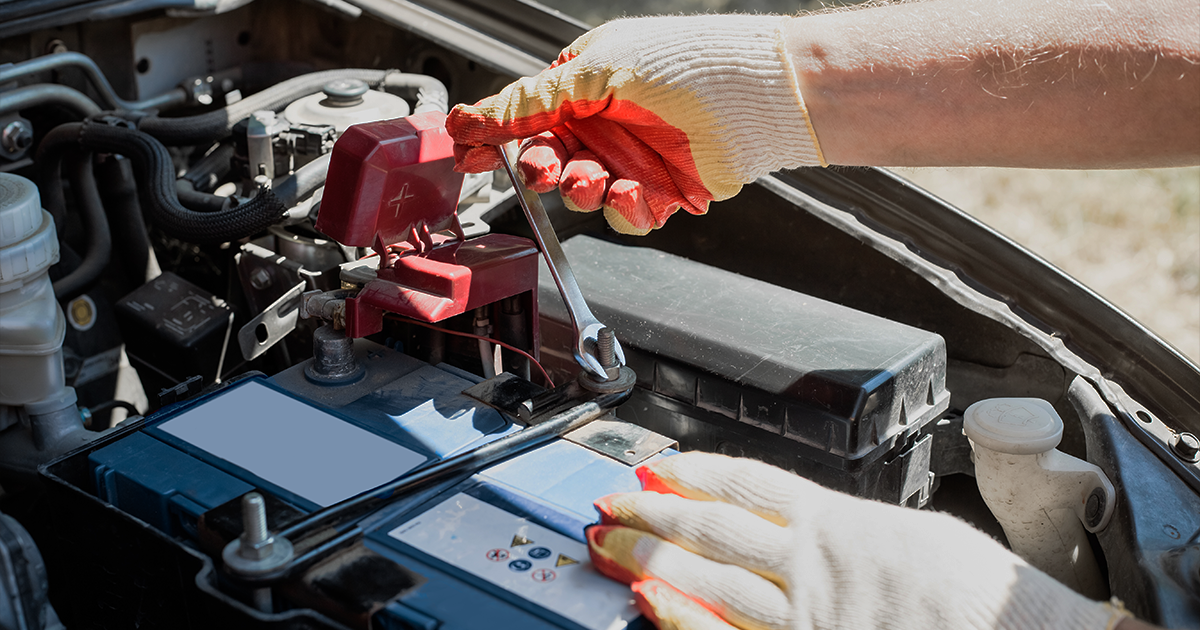A battery disconnect switch, also known as a battery isolator switch or kill switch, is a crucial safety device that allows you to quickly and easily disconnect the battery from the electrical system of your car or boat.
This simple yet effective device can isolate the battery from the electrical system, ensuring safety and preventing damage, theft, and unwanted battery drain.
While the specific installation process may vary depending on the type of car or boat and the switch you choose, the general steps involved are relatively straightforward.
Here’s a comprehensive guide on how to install a battery disconnect switch on your car or boat.

Necessary Tools and Materials
Make sure you have the following tools and materials before you begin.
- Safety Glasses & Gloves
- Wrenches or Sockets
- Wire Cutters and Strippers
- Electrical Tape
- Battery Disconnect Switch compatible with your car or boat
Installing The Battery Disconnect Switch on Car or Boat
Protect your car’s electrical system from potential hazards and safeguard your investment by installing a battery disconnect switch.
Follow these simple steps to install the battery disconnect switch in your car or boat.
Step 1. Locate the Battery
The first step is to locate the battery in your car or boat. It is typically found under the hood or in a compartment near the engine.
Step 2. Disable the Electrical System
To prevent accidental shorts or sparks, it is crucial to disable the electrical system before disconnecting the battery. This can be done by removing the ignition key and setting the parking brake.
Step 3. Disconnect the Negative Battery Terminal
Locate the negative battery terminal, which is typically marked with a black or blue symbol. Use a wrench or socket to loosen the nut securing the negative battery cable, and then carefully remove the cable.
Step 4. Install the Battery Disconnect Switch
Mount the battery disconnect switch in a secure and accessible location, preferably close to the battery. Connect the negative battery cable to the input terminal of the switch, ensuring a tight and secure connection.
Step 5. Connect the Output Terminal
Attach the output terminal of the switch to a new positive battery cable. Run this cable to the positive battery terminal and secure it tightly.
Step 6. Test the Battery Disconnect Switch
Once the installation is complete, test the battery disconnect switch by turning it to the “OFF” position. Verify that the electrical system is completely disabled. Then, turn the switch to the “ON” position to restore power.
Additional Tips
- Consult the owner’s manual or manufacturer’s instructions for specific installation guidelines.
- If you need more clarification on any steps, consider seeking assistance from a qualified mechanic or electrician.
- Regularly inspect the battery disconnect switch for any signs of damage or corrosion.
- Keep the area around the switch clean and free from debris.
Conclusion
Installing a battery disconnect switch is a simple yet effective way to enhance the safety and security of your car or boat. By following these steps, you can easily install the switch and enjoy the peace of mind that comes with knowing you can quickly disable the electrical system if needed.
FAQs
Should a battery disconnect switch be on positive or negative?
A battery disconnect switch should be installed on the negative battery terminal. This is because the negative terminal is connected to the chassis of the car or boat, which is the ground for the electrical system. When the switch is turned off, it breaks the circuit between the battery and the ground, effectively isolating the battery from the rest of the electrical system.
How do you install a battery shut off switch?
The specific installation process for a battery disconnect switch may vary depending on the type of car or boat and the switch you choose.
- Gather the necessary tools & materials. This includes safety glasses and gloves, wrenches or sockets, wire cutters and strippers, electrical tape, and the battery disconnect switch itself.
- Locate the battery, typically under the hood or near the engine.
- Disable the electrical system by removing the ignition key and setting the parking brake.
- Disconnect the negative battery terminal using a wrench or socket.
- Mount the battery disconnect switch securely, preferably close to the battery.
- Connect the negative battery cable to the input terminal of the switch.
- Attach the output terminal of the switch to a new positive battery cable and run it to the positive battery terminal, securing it tightly.
- Test the battery disconnect switch by turning it to the “OFF” position to verify the electrical system is disabled. Then, turn it to the “ON” position to restore power.
Where should a power disconnect switch be located on the battery circuit?
A power disconnect switch should be located on the battery circuit between the battery and the ground (negative terminal). This is the most effective location to isolate the battery from the rest of the electrical system.
Which side should a battery disconnect be on?
A battery disconnect switch should be installed on the negative battery terminal.
Which do you disconnect first, positive or negative?
You should always disconnect the negative battery terminal first before disconnecting the positive terminal. This is because the negative terminal is connected to the chassis of the car or boat, which is the ground for the electrical system.
Disconnecting the negative terminal first breaks the circuit between the battery and the ground, preventing accidental sparks or shorts.
When should you use a battery disconnect switch?
A battery disconnect switch can be used in a variety of situations, including
Preventing electrical shorts: If you are working on the electrical system of your car or boat, disconnecting the battery can prevent accidental shorts that could damage electrical components.
Theft prevention: Disconnecting the battery can make it more difficult for thieves to steal your car or boat.
Unwanted battery drain: If you are storing your car or boat for an extended period, disconnecting the battery can prevent unwanted drain.
What are the benefits of a disconnect switch?
There are several benefits to installing a battery disconnect switch, including:
Enhanced safety: A battery disconnect switch can help to prevent electrical shorts, theft, and unwanted battery drain.
Peace of mind: Knowing that you can quickly disable the electrical system of your car or boat in an emergency can provide peace of mind.
Ease of maintenance: Disconnecting the battery can make it easier to work on the electrical system of your car or boat.
Extended battery life: A disconnect switch can help to extend your battery’s life by preventing unwanted battery drain.



